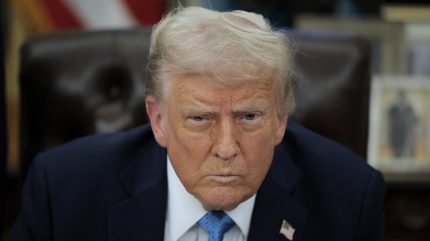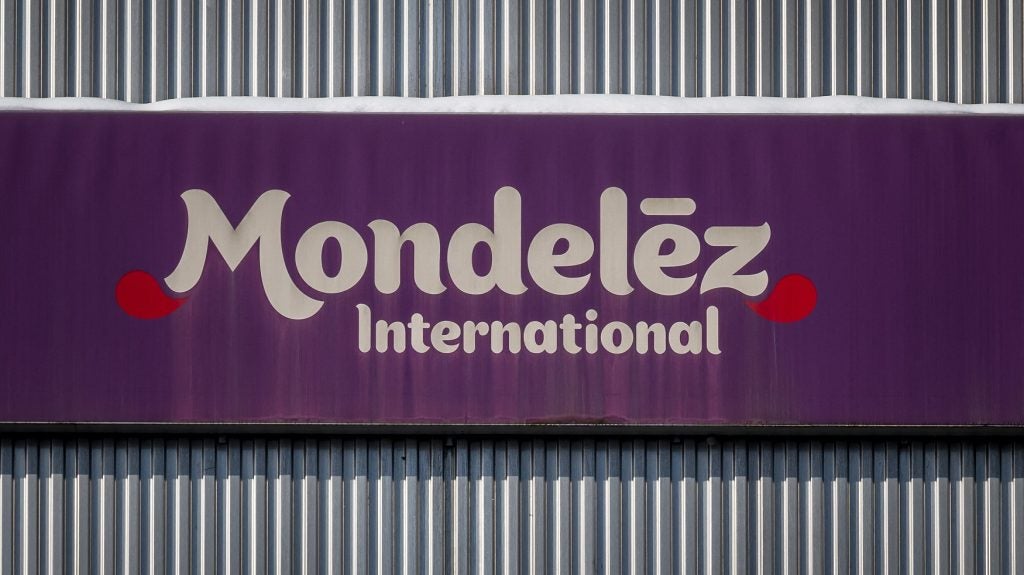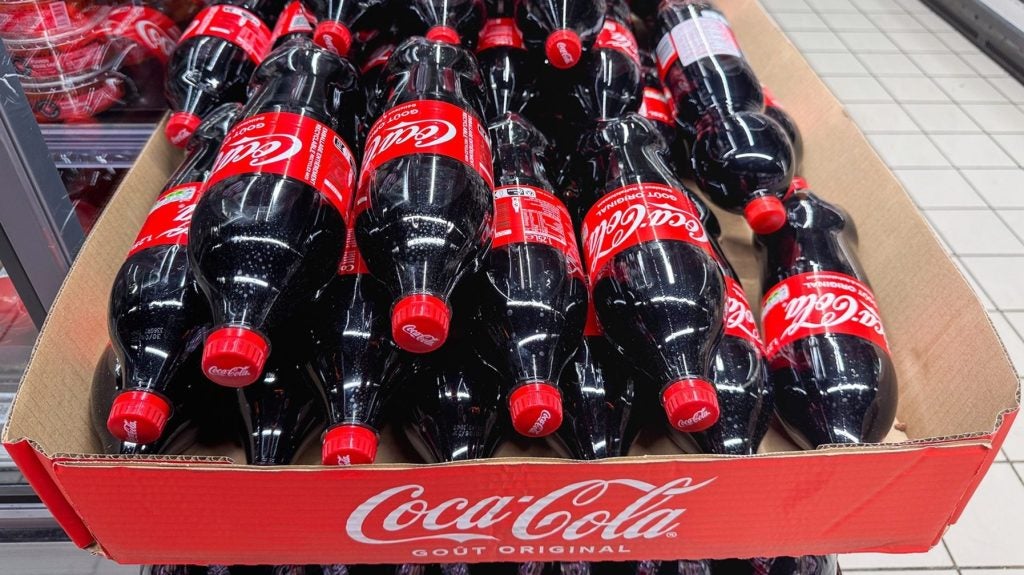
There is seemingly only one person in the world who thinks the word “tariff” is “the most beautiful word” and unfortunately for governments and businesses globally that person just happens to reside in the White House at the moment.
President Trump has shown that his pre-inauguration plans to introduce tariffs on Canada, Mexico and China were not empty promises.
However, the author of The Art of the Deal, has also shown that he is open to one and, at the moment, the implementation of 25% tariffs on imports from both Canada and Mexico has been paused.
The US has imposed tariffs on China and the EU awaits Trump’s next move after he said he would “definitely” impose tariffs on the bloc.
The situation remains fluid and Trump appears to be open to negotiations over reciprocal arrangements but, amid the uncertainty, some food and drinks companies are starting to weigh up the potential cost to their operations.
Drinks behemoth Diageo has said Trump’s tariffs could result in a $200m hit to its profits, with its Tequila portfolio and Canadian whisky most affected.
The group’s chief executive Debra Crew said Diageo is already considering raising prices, running fewer promotions and reallocating some investments to offset the impact of tariffs.
Earlier this month, Luca Zaramella, CFO of US snacks giant Mondelez International told analysts the tariffs lined up on imports from Mexico and Canada “would create an additional headwind to the business, but given the fluid and rapidly changing nature of timing, it is difficult to provide a reliable estimate of impact for the full-year at this time”.
While it’s unclear where the chips will ultimately fall when it comes to Trump’s tariffs plan, what is clear is US consumers and businesses that import goods into the country will ultimately suffer. The easiest way manufacturers can mitigate the impact is to simply raise prices in store.

However, brands will need to think very carefully before going down this route as it could have a detrimental impact on sales, cautions Francois Sonneville, director of beverages at Rabobank.
“If the tariff is passed on, it becomes a question of whether the US distributor and/or US consumer is willing to also pay more? They might switch to an American alternative, which is what Trump wants, they might buy less, or not buy at all, providing the drinks company with a problem of having to find alternative markets,” Sonneville says.
“If US distributors/consumers are unwilling to carry the burden, the tariff has to be absorbed and the ball is back in the court of the exporter and its US subsidiary. Do they still want to supply the US market for lower margins, or do they want to direct the flow to other markets which don’t have a tariff? If supply is tight, the latter is easy, but if not, they would have to lower the price in the alternative market to create extra demand.”
If companies decide not to sell into the US market for a short period while the situation settles down and greater clarity is provided, they risk losing brand equity and trying to earn it back in the future could be very costly. As a result, it is important manufacturers take a long-term perspective before they make decisions, cautions Sonneville.
Besides adopting the blunt instrument of simply introducing price hikes on products sold into the US, there are other options available to food and beverage businesses.
“One way food manufacturers can look to mitigate the impact on their business is to change either how they source or the product formulations,” says Richard Wyborn, partner at Food Strategy Associates. “For example, a food manufacturer that is sourcing ingredients from a country that will become subject to tariffs, may look to alternative countries/dual supply for that same ingredient to mitigate the cost increases or even explore reformulating products to minimise the amount of costly raw material used.”
Another option Wyborn suggests exploring is revenue growth management (RGM). A key part of RGM relates to pricing strategy and how companies can optimise the pricing of their portfolios in response to tariff increases, he explains.
“To do this, some may look to amend the price-pack architecture of their portfolio, for example reducing pack sizes to avoid increase in shelf price, while others may adjust promotional strategies to pass costs on.”
Wyborn continues: “Another pillar of RGM open to food manufacturers is to optimise their portfolios in response to the changes in pricing and profitability of different products. As an example, we would expect Diageo in the US, where circa 45% of its sales come from products imported from Mexico and Canada, to, in part, manage the impact by pushing other products in its portfolio which won’t be subject to tariffs.”
Might Trump’s tariffs lead to investment in US production?
Manufacturers looking to offset the impact of tariffs could also explore the more dramatic – and costly – option of building manufacturing plants in the US, which is partly what Trump wants to achieve by introducing tariffs in the first place.
“For those companies that were already thinking about building a presence in the US, or those that already have a presence in the US, one option is to actually accelerate building that presence,” says Cyrille Filott, global strategist for consumer foods, packaging & logistics at Rabobank. “This is something that you have already seen happening in the frozen space recently with frozen bakery companies buying assets or building assets in the US. For example, a European frozen potato company called Agristo is going to build a huge factory in North Dakota. So previously, a lot of the frozen fries that you would get in the US were shipped from Belgium, but they now are going to build locally. Tariffs might accelerate the plans of European companies who are already exploring this option.”
However, this approach comes with multiple different challenges. Firstly, there’s the high associated cost of building a new facility and then there is the political situation in the US, which is not particularly stable at the moment.
The labour force in the US is already much more unpredictable than it is in Europe
Cyrille Filott, Rabobank
Many US states are supportive of inward investment and will provide generous grants or subsidies to support the delivery of job generating manufacturing plants but setting up shop Stateside is a major gamble. There are also issues associated with attracting skilled labourers.
“The labour force in the US is already much more unpredictable than it is in Europe,” says Filott. “It’s much easier for people to go to another company if they can make half a $1 more per hour, so there’s a lot of switching behaviour and retention is very difficult. And now there is even more pressures on the labour market, with illegal immigrants potentially being removed from from the workforce in some sectors like agriculture.”
Another costly solution to the tariff conundrum that some manufacturers have already implemented is fast-tracking the shipment of goods into the US ahead of the implementation of tariffs and stockpiling them.
As a source explains: “As I understand it, some of the wine makers, spirit makers and other companies have started to maximise what they’re storing locally, so they can then minimise any short term impact of tariffs while there’s still negotiations going on.”
It’s a scenario that Filott has also anecdotally heard is occurring. “The warehouses in the US are quite full with alcoholic beverages and also butter. There’s a lot of butter being shipped from Ireland – Irish grass butter is a phenomenon in the US. So, already companies were taking cautionary measures but that’s temporary and we don’t know how long tariffs will last and whether they will come – and if they do come, how long they will be there for, so just to avoid that, traders have taken positions.”

The impact on suppliers
The biggest challenge that companies located in countries that might potentially be hit by tariffs in the future is the ongoing uncertainty. There is still a lack of clarity as the extent of some of Trump’s proposed tariffs, how they will be implemented and what they will actually cover, and as AlixPartners managing director Andrew Searle says, companies hate uncertainty.
“One thing we are engaging with people on, is not just the finished goods that they may produce elsewhere and move into the United States, but it’s the raw materials that they have to import in order to then produce in the United States,” Searle says.
“That could be agricultural produce, which was mentioned when he’s [Trump] been talking about Canada, but it could be other things. It could be packaging materials. It could be industrial equipment that companies need to expand the capacity and capability of factories.
This might not just hit their suppliers, but their suppliers’ suppliers
Andrew Searle, AlixPartners
“A lot of those supply chains are not necessarily Europe into United States. It could be South America into the United States, it could be Asia. A lot of people are looking at what are some of those risks, and what can they do to mitigate that? I think it helps that a number of people have already started to think about their supply chain resilience and started to map out their supply network, because this might not just hit their suppliers, but their suppliers’ suppliers.”
Coca-Cola Co. has already warned it may have to source more PET for its drinks in the wake of Trump’s planned tariff on steel and aluminium imports into the US. Speaking to analysts earlier this month, Coca-Cola Co. chairman and CEO James Quincey said “if aluminium cans become more expensive, we can put more emphasis on PET bottles, et cetera, et cetera. We will adapt the packaging strategy in function of changes in the relative input costs of what goes into that”.
Australia-based Yowie Group has also publicly stated it is re-evaluating its supply chain in response to the planned US tariffs on imports from Canada and China, from which it sources chocolate, packaging and toys for its US production facility.
Unfortunately, blunt instruments like tariffs are a zero-sum game but, although manufacturers may not ultimately emerge as victors, there are a number of options they could potentially explore to ensure they are not too badly affected.
“Working closely with key customers, or suppliers can help companies find mutually beneficial solutions that minimise the impact on both parties or deliver other kinds of benefits,” says Wyborn. “These could be commercial – e.g. change in shelf space allocations – but also finance- and supply chain-related – for example, changes to payment terms or greater drive for logistical or supply chain efficiencies. The reality is that there is no silver bullet to deal with something like a trade war and companies have to pull different levers and work with others to minimise the impact on their businesses.”




